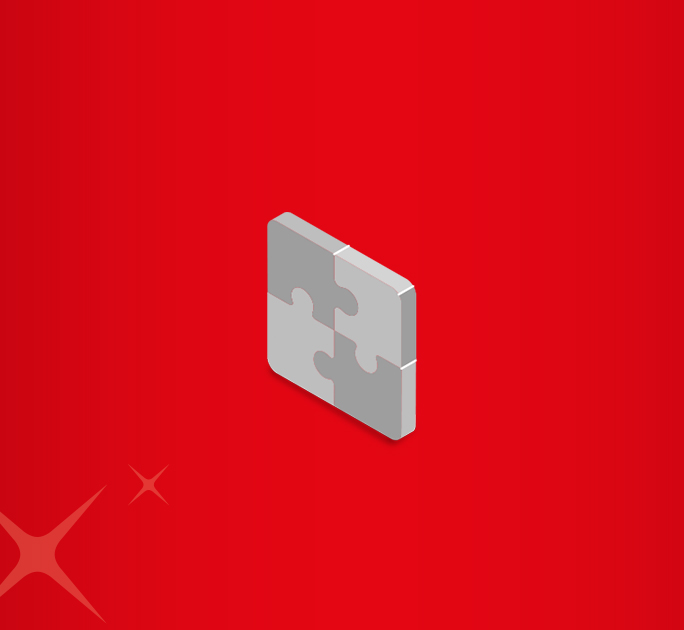- Save
- Invest
- Borrow
- Pay
- More
- Customer Services

What is a Savings Account?
A detailed guide on Savings Account: Types, Benefits, Features and more
Key Takeaway
- A Saving Account is an excellent place to create wealth and meet financial emergencies.
- It comes with a host of benefits including a free debit card to withdraw funds anytime
- It is a highly liquid account that you can access anytime.
- You can also avail additional facilities like internet and mobile banking with your Savings Account
- There is no cap on the amount of money you can deposit or withdraw.
Introduction
Thanks to technological advancements, the world of banking is a lot easier to access now. The convenience of cash withdrawal at any time at an ATM near you is perhaps the most visible face of the ease of banking. Be it money transfers or paying your utility bills, you can do it all 24x7 from the comforts of your home. Banks offer a host of services and accounts, but the most common one is the savings account, which serves as the stepping stone to the world of banking. Let us decode savings account meaning, types, benefits and more, in this article.
What is Savings Account?
As is apparent from the name, a Savings Account is a type of bank account where you can save or park your money freely. It also allows you to earn a moderate interest rate along with the liberty of withdrawing money whenever you need it. Besides enabling you to save money, the savings account also equips you with several other facilities that make banking convenient.
How Does a Savings Account Work?
A savings account helps you manage your money with safety, flexibility, and interest earnings. Here's how it functions:
- Deposit Funds Anytime - You can add money at your convenience through cash, cheque, UPI, or online transfers. Most regular savings accounts have no cap on deposits.
- Earn Interest on Your Balance - The bank calculates interest daily or monthly and credits it quarterly or semi-annually. You can use a savings account interest calculator to estimate your potential returns.
- Access Your Money When Needed - Withdraw cash from ATMs, pay bills, or make transfers using internet or mobile banking. The account offers high liquidity, ideal for both planned and emergency expenses.
- Track and Manage Transactions - Every deposit, withdrawal, or transfer is recorded digitally, helping you monitor your savings and spending habits in real time.
- Choose Account Types That Suit You - Banks offer options like senior citizen savings accounts, child savings accounts, and women saving accounts with added benefits like preferential interest rates or fee waivers.
By combining secure storage with easy access and interest earnings, a savings account supports both short-term needs and long-term financial goal
Benefits of Savings Account
Having explained what savings bank account is, let us now examine its benefits. As a cash management tool, your Savings Account can facilitate you in multiple ways.
Prepares you for emergencies
A Savings account is a good place to park money for emergencies. It has high liquidity coupled with high daily withdrawal limits, which means that you can withdraw cash anytime.
Safe with no cap on deposits
Savings Accounts are highly safe and secure places to park your money. You can deposit any amount of money in your account without worrying about limits or caps.
Improves your finances
A Savings Account rewards you for depositing money in the form of interest on savings. The interest is credited semi-annually or annually, depending on the type of savings account you have.
Easy account opening
Today, it is very easy to open a Savings Account. You can open an account online from the comfort of your home simply by filling a form, submitting scanned copies of your documents, and completing a quick eKYC process. You no longer need to visit a bank to open the account.
World of facilities
Most saving accounts come with a debit + ATM card for easy cash withdrawals, giving you access to cashback and reward points. Moreover, you can order demand drafts, open Recurring Deposits and Fixed Deposits, and make inter and intra-bank transfers with net banking facilities.
Easy access to savings
As a highly liquid account, a Savings Account keeps you better prepared to meet emergency needs. You can withdraw cash anytime, with high daily withdrawal limits on your debit card. Moreover, there is no withdrawal limit if you choose to withdraw cash physically from the bank branch.
Discounts on bank lockers
An added benefit of Savings Accounts holders is that they get discounts on bank lockers rentals for maintaining a minimum quarterly balance.
Features of savings bank account
Besides knowing the Savings Account definition, let us all assess its many features. They are as under:
- You may deposit any amount of money as often as you like without worrying about any limits or caps on deposits.
- For cash transactions exceeding INR 50, 000, you have to provide your Permanent Account Number (PAN) details mandatorily.
- Your deposits in Savings Account earn interest annually or semi-annually, DBS Bank stands out for offering some of the best savings account interest rates in the market—up to 5.5% p.a.
- You can easily order cheque books, debit, and credit cards directly through your internet-banking enabled savings account, to your home address.
To send money abroad seamlessly and securely, open a DBS Bank savings account in minutes!
Types of Savings Accounts
Primarily, there are five types of savings accounts. They are as under:
Regular Savings Account
A Regular Savings Account empowers you to deposit money at your convenience. Interest is paid every month on the balances maintained in the account but is credited annually or semi-annually. You are required to maintain a prescribed minimum amount of balance in the Savings Account, failing which you will have to pay the penalty levied by the bank. You get all the basic facilities like a free cheque book, passbook, ATM card, etc., with your Regular Savings Account.
Salary Savings Account
Generally, employers create salary Savings Accounts for employees. The key benefit of a salary account is the no minimum balance requirement feature. As such, you will have to comply with the rules of a regular account and maintain the minimum balance required.
For example, the DBS Bank Corporate Salary Account offers a host of benefits such as:
- Up to 5.5% p.a. interest* on the linked DBS Bank Savings Account
- Unlimited free domestic ATM transactions
- Free IMPS transfers
- Seamless mobile banking access via the DBS digibank app
- Zero minimum balance requirement
Senior Citizen Savings Account
This account is specially designed for senior citizen account holders and comes with certain extra benefits. Prominently, a senior citizen savings account offers higher interest rates on the savings parked. t. Account-holders can also link this account to their pension funds.
For example, DBS Bank’s Golden Circle savings account for senior citizens includes priority customer support, dedicated relationship managers, and exclusive lifestyle benefits such as health check-up packages and wellness offers to make banking more convenient and rewarding.
Savings Account for Children
A Savings Account for children is like a regular Savings Account but without any average balance requirement. You can open a child savings account for your children, with the minor as the primary account holder and you as the parent or guardian. can serve as the joint holder. Note that once the minor turns 18, the Savings account for children is converted into a Regular Savings Account.
Savings Accounts for Women
Designed especially for women, and to encourage them to open their own accounts, the Savings Account for Women come with a host of facilities. These include high daily ATM withdrawal limits and debit card transactions at retail outlets. Women may also get slightly higher interest on their deposits, along with extra reward points, shopping discounts and more, with this account.
How Much Should You Keep in Your Savings Account?
How much you should keep in your savings account depends on your financial routine and the role this account plays in your money management.
- Cover Essential Expenses
A common rule is to maintain enough to cover at least 2–3 months of essential costs like rent, utilities, groceries, and loan repayments. This ensures quick access to funds when needed.
- Build an Emergency Reserve
A savings account is ideal for storing your emergency fund due to its safety and liquidity. You can withdraw money instantly through ATMs or digital channels without delay.
- Avoid Leaving Excess Funds Idle
Once you’ve set aside enough for immediate needs and emergencies, consider moving surplus funds to options that may offer higher returns. This helps balance safety with smarter growth.
- Plan Your Balance Smartly
If you're unsure how much interest your current balance might earn, use a Savings Account Interest Calculator to get a quick estimate based on your deposit amount and rate.
Keeping just the right amount in your account helps you stay financially prepared without letting your savings sit idle.
Checklist of documents required to open a Savings Bank Account
When applying for a savings account, it’s important to keep the documents required for a savings account ready. These documents help verify your identity, address, and age. Here’s a quick checklist:
Proof of Address
As proof of address, you have to submit photocopies of specific documents, as mentioned in the account opening form. The following address proof documents are accepted.
- Aadhaar Card
- Voter ID
- Utility bill (electricity, gas, water, telephone)
- Passport
- Driving license
- Passbook of bank or bank account statement
- Ration Card
- Letter with address stamped/signed/recognised by a gazetted officer or public authority
Proof of Age and Identity
An ID proof document is one which has your photograph affixed on it. Here are some of the most accepted ID proof documents for opening a bank account, and you can submit any one of these:
- PAN Card
- Aadhaar Card
- Voter ID
- Passport
- Driving licence
- Employee ID card bearing your photograph
- Any state or central government-issued photo ID card
Two passport-sized photographs
You need to provide two recent passport-sized photographs along with the above documents.
Once the documents are verified, the bank will open your account. You can also choose to open a bank account online through a quick and paperless process, depending on the bank’s digital services.
Open Savings Account
in 3 easy steps
Opening a Savings Account with DBS Bank is quick, paperless, and completely online.
Step 1: Get started by downloading the DBS digibank app or visiting the official website.
Step 2: Keep your PAN and Aadhaar handy. Complete the Video KYC from your phone or computer.
Step 3: After successful verification, your account is instantly activated. You can begin using online banking features immediately, and your welcome kit will be delivered soon after.
Conclusion
Now that you know Savings Bank Account meaning, types, and benefits, go ahead and choose your preferred account. Whether you are a working individual, student, or a homemaker, it is essential to inculcate a healthy habit of saving for the rainy days. A Savings Account is the right place to begin to harness this habit. Once you start saving with discipline, you will see that your finances get more organised than ever.
With DBS Bank app, you can open a new savings account in a few minutes! Download the app to get started.
*Disclaimer: This article is for information purposes only. We recommend you get in touch with your income tax advisor or CA for expert advice.















